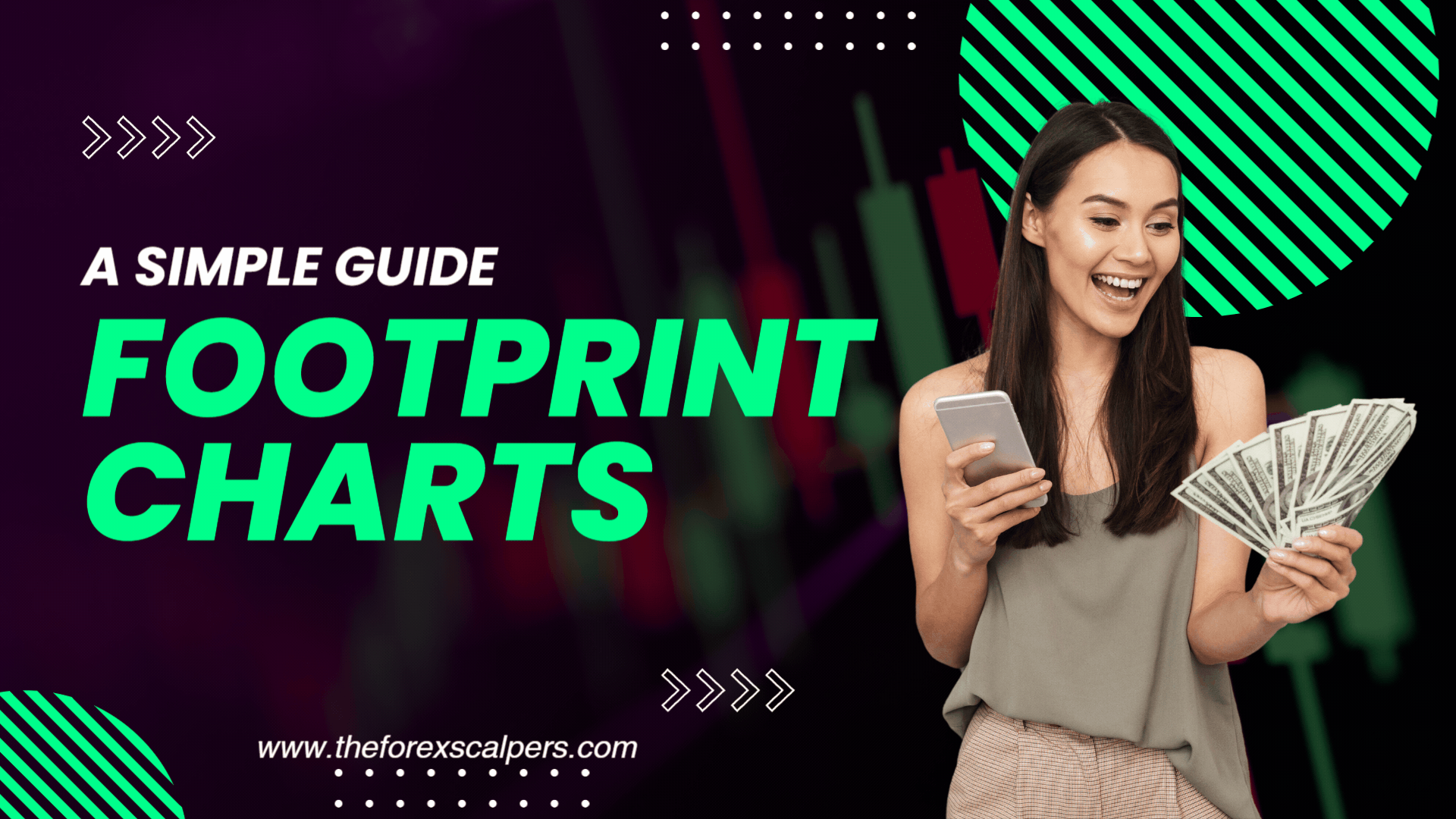Traders looking to get an edge in the market. Whether you’re just starting out or you’ve been trading for a while, this guide will shed light on how footprint charts can help you see the market in a new way.

What Are Footprint Charts?
Think of footprint charts like a detailed map that shows not just the roads (or in trading terms, the price changes) but also the traffic on those roads (the volume of trades happening). Unlike traditional charts that only tell you the price moved, footprint charts show you how many trades happened at each price level, giving you a clear picture of where buyers and sellers are most active.

Why They’re a Big Deal
Knowing where the market is heading is key to making smart trading decisions. Traders who can spot changes in market direction early on can manage their risks better and have a better chance of making profitable trades. This is where footprint charts come into play. They offer a real-time glimpse into market activity, showing you exactly where supply (sellers) and demand (buyers) are at any given moment.
Diving Deeper with Footprint Charts
Footprint charts are a window into the market’s soul, showing you the push and pull of supply and demand as it happens. They provide a wealth of information, including:
- How much trading is happening at each price level.
- Whether buyers or sellers are dominating at any given price.
- Key areas where the market might turn around (supply and demand levels).
By studying this information, traders can make more informed decisions, spotting opportunities that others might miss.
How to Get Started
- Choose a Good Charting Platform: Look for a platform that offers accurate and easy-to-use footprint charts. Some platforms, like ATAS, offer great features without needing to buy expensive software.
- Learn the Basics: Take some time to understand how footprint charts work and what the different signals mean.
- Practice: Before jumping in with real money, try paper trading (simulated trading) to get comfortable with using footprint charts.
- Make a Plan: Decide on your trading strategy based on what you see in the footprint charts. Knowing your approach in advance can help you trade more confidently.
- Start Trading: Once you feel ready, start trading with small amounts and gradually increase as you become more comfortable and successful.
Key Strategies for Using Footprint Charts
- Look for Imbalances: These are areas where there’s a significant difference between buyers and sellers, often leading to a price move.
- Spot Unfinished Business: Areas where trades didn’t get completed can signal future market movements.
- Use Volume Profile: This shows you where the most trading activity is happening, helping you find key trading levels.
Wrapping Up
Footprint chart offer a detailed view of market activity, allowing traders to make smarter decisions based on real-time data. By understanding the flow of orders and how it affects price levels, traders can better predict market movements and improve their trading results. Remember, the right charting platform and a solid understanding of footprint charts can be your best allies in navigating the complexities of trading.
Join us
Joining our community opens the door to a network of enthusiastic traders, all focused on mutual success. Our exclusive members-only Slack channel is your arena for exchanging ideas, dissecting market trends, and fostering collaborations. That can turn trading visions into reality.
Don’t let another moment pass in hesitation. Embark on your journey to trading excellence today by enrolling in our courses. It’s time to transform your trading dreams into your reality.
Join our courses and community today and take your skills to the next level!
Elevate Your Trading with ATAS.
So for those dedicated to mastering the art of futures trading, ATAS is more than a platform. It’s a partner in your journey towards trading excellence. Its blend of sophisticated analysis tools, customizable features, and supportive community. This makes ATAS the recommended choice for traders aiming to leverage the full potential of the futures market.










One Reply to “Footprint Charts: A Simple Guide.”
I want to learn how footprint charts work